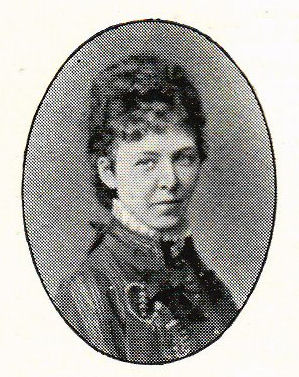Maria Neruda on:
[Wikipedia]
[Google]
[Amazon]
 Anna Marie Rudolfina Neruda (also known as Maria Arlberg or Madame Arlberg-Neruda) (26 March 1840 in Brno – 7 November 1920 in Copenhagen) was a Czech-Swedish violinist.
Born in Brno,
Anna Marie Rudolfina Neruda (also known as Maria Arlberg or Madame Arlberg-Neruda) (26 March 1840 in Brno – 7 November 1920 in Copenhagen) was a Czech-Swedish violinist.
Born in Brno,
“Wunderkinder” – Musical Prodigies in European Concert Life between 1791 and 1860 – Submitted in accordance with the requirements for the degree of Doctor of Philosophy: The University of Leeds School of Music
/ref> While touring Europe together Wilma and Maria met a number of well-known personalities, including Hans Christian Andersen in Denmark in 1862. In 1868 in Stockholm she married the opera singer Fritz Arlberg and with him had a son, the singer and actor Hjalmar Arlberg (1869–1941). She ended her career at her marriage and after made only a few appearances. Maria Neruda died in
Neruda, 1. Vilhelmina (Wilma) Marie Františka in the ''Nordic Family Book'' (second edition, 1913)
* ttp://runeberg.org/spg/21/0089.html Anna Maria Rudolfina Neruda-Arlberg in Adolf Lindgren and Nils Personne, Swedish Portrait Gallery (1897), volume XXI. Tone artists and scenic artists 1840 births 1920 deaths Musicians from Brno Czech classical violinists Women classical violinists 19th-century classical violinists 19th-century Czech musicians 19th-century Czech women musicians {{Violinist-stub
 Anna Marie Rudolfina Neruda (also known as Maria Arlberg or Madame Arlberg-Neruda) (26 March 1840 in Brno – 7 November 1920 in Copenhagen) was a Czech-Swedish violinist.
Born in Brno,
Anna Marie Rudolfina Neruda (also known as Maria Arlberg or Madame Arlberg-Neruda) (26 March 1840 in Brno – 7 November 1920 in Copenhagen) was a Czech-Swedish violinist.
Born in Brno, Moravia
Moravia ( , also , ; cs, Morava ; german: link=yes, Mähren ; pl, Morawy ; szl, Morawa; la, Moravia) is a historical region in the east of the Czech Republic and one of three historical Czech lands, with Bohemia and Czech Silesia.
The m ...
, then part of the Austrian Empire
The Austrian Empire (german: link=no, Kaiserthum Oesterreich, modern spelling , ) was a Central-Eastern European multinational great power from 1804 to 1867, created by proclamation out of the realms of the Habsburgs. During its existence ...
, Neruda came from a musical family. Her grandfather was the noted Bohemian composer Johann Baptist Georg Neruda
Johann Baptist Georg Neruda (Czech: ', – ) was a Czech classical composer, violinist and cellist.
Life
Neruda's dates of birth and death (taken from the '' Grove Dictionary'') are only approximations. He was born in Kingdom of Bohemia, ...
(1708–1780), and her father, Josef Neruda (1807–1875), was the organist of the cathedral of Brno. One of five children of Josef Neruda, she was the sister of the violinist Wilma Neruda
Wilhelmine Maria Franziska Neruda (1838–1911), also known as Wilma Norman-Neruda and Lady Hallé, was a Moravian virtuoso violinist, chamber musician, and teacher.
Life and career
Born in Brno, Moravia, then part of the Austrian Empire, N ...
and the cellist Franz Xaver Neruda. She studied with her father and in 1859 joined a family group known as the Neruda Quartet, composed of various Neruda children including older sister Wilma. She performed with her siblings in, among other venues, London (1849), St. Petersburg and Stockholm (1861).Yvonne Amthor“Wunderkinder” – Musical Prodigies in European Concert Life between 1791 and 1860 – Submitted in accordance with the requirements for the degree of Doctor of Philosophy: The University of Leeds School of Music
/ref> While touring Europe together Wilma and Maria met a number of well-known personalities, including Hans Christian Andersen in Denmark in 1862. In 1868 in Stockholm she married the opera singer Fritz Arlberg and with him had a son, the singer and actor Hjalmar Arlberg (1869–1941). She ended her career at her marriage and after made only a few appearances. Maria Neruda died in
Copenhagen
Copenhagen ( or .; da, København ) is the capital and most populous city of Denmark, with a proper population of around 815.000 in the last quarter of 2022; and some 1.370,000 in the urban area; and the wider Copenhagen metropolitan ar ...
in 1920.
References
Sources
Neruda, 1. Vilhelmina (Wilma) Marie Františka in the ''Nordic Family Book'' (second edition, 1913)
* ttp://runeberg.org/spg/21/0089.html Anna Maria Rudolfina Neruda-Arlberg in Adolf Lindgren and Nils Personne, Swedish Portrait Gallery (1897), volume XXI. Tone artists and scenic artists 1840 births 1920 deaths Musicians from Brno Czech classical violinists Women classical violinists 19th-century classical violinists 19th-century Czech musicians 19th-century Czech women musicians {{Violinist-stub